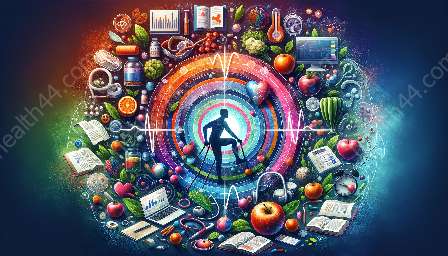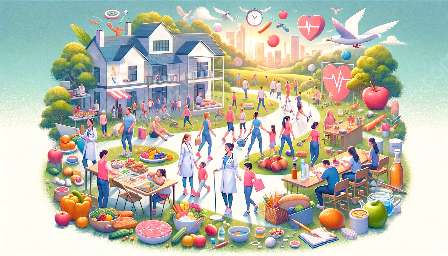There is a growing recognition of the important role that arts and creativity play in promoting health and well-being, especially in educational settings. This topic cluster delves into the powerful intersection of arts, creativity, and health promotion.
The Impact of Arts and Creativity on Health Promotion
Arts and creativity have long been recognized as powerful tools for promoting health and well-being. The use of arts in health promotion initiatives has been shown to have positive effects on mental, emotional, and physical well-being. In schools and educational settings, integrating arts into health promotion programs can have a transformative impact on students' overall health and development.
Enhancing Health Promotion in Schools through the Arts
Integrating arts into health promotion initiatives in schools can offer a holistic approach to fostering well-being. By engaging in creative activities such as music, visual arts, dance, and drama, students can develop important skills such as self-expression, emotional regulation, and resilience. This not only promotes better mental health but also contributes to a positive school environment and sense of community.
The Role of Creativity in Health Promotion
Creativity is an essential component of health promotion. Encouraging creative expression and exploration can empower individuals to take an active role in their own well-being. By fostering creativity, health promotion efforts can tap into individuals' innate abilities to problem-solve, innovate, and adapt, leading to more effective and sustainable health outcomes.
Integrating Arts into Health Promotion Initiatives
Integrating arts and creativity into health promotion initiatives requires collaboration across disciplines and sectors. Educational settings provide a unique opportunity to incorporate arts into health promotion through the curriculum, extracurricular activities, and partnerships with community organizations. By creating a supportive environment for artistic expression, schools can cultivate a culture of well-being and resilience.
Measuring the Impact of Arts on Health Promotion
Measuring the impact of arts on health promotion involves a multidimensional approach. Qualitative and quantitative assessments can capture the effects of arts and creativity on individuals' physical, mental, and social well-being. By incorporating evaluation into health promotion initiatives, educators and health professionals can gain valuable insights into the effectiveness of arts-based interventions.
Challenges and Opportunities
Integrating arts and creativity into health promotion efforts in educational settings may present challenges such as resource constraints, lack of awareness, and the need for specialized expertise. However, these challenges also present opportunities for innovation, collaboration, and advocacy. By addressing these challenges, educators and health promoters can harness the full potential of arts in advancing health and well-being.
Sustainable Strategies for Arts-Integrated Health Promotion
Developing sustainable strategies for arts-integrated health promotion involves fostering partnerships, advocating for resource allocation, and promoting the value of arts in education and health. By cultivating a supportive ecosystem that values creativity and arts, educational settings can become catalysts for long-term health promotion impact.
Conclusion
The intersection of arts, creativity, and health promotion in schools and educational settings holds immense potential for fostering holistic well-being. By recognizing and harnessing the power of arts, educators, health promoters, and communities can cultivate environments that nurture creativity, resilience, and overall health.



